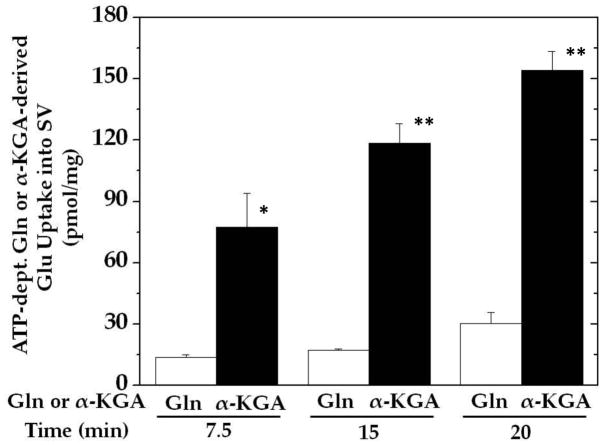Fig. 3.
The ability of isolated synaptic vesicles to convert glutamine to glutamate and accumulate is minimal compared with that to cause α-KGA-derived glutamate uptake. Rat synaptic vesicle fraction SV-A′ (50μg) was incubated in the presence of 250 mM sucrose at 30° C for various periods of time with 50 μM [3H]glutamine (0.4 mCi/mmol) or 50 μM [14C]α-KGA (57 mCi/mmol), 2 mM aspartate, and 3 mM inorganic phosphate, each with or without 2 mM ATP. The mixture without [3H]glutamine or [14C]α-KGA was preincubated at 30° C for 2 min. After addition of 50 μM [3H]glutamine or 50 μM [14C]α-KGA, the mixture was further incubated for various periods indicated. Values obtained in the absence of ATP were subtracted from all values. The data represent the mean ± SEM from three separated preparations. *, p<0.05; **, p<0.005. Glu, glutamate; Gln, glutamine; SV, synaptic vesicle.

